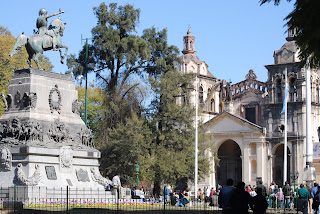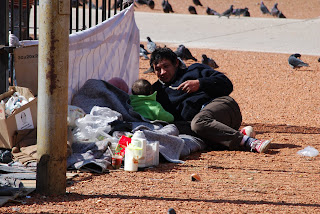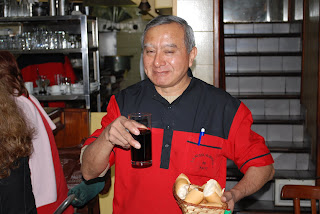



This is my last post for at least 24-36 hours. This afternoon I board the bus for San Carlos de Bariloche, a small resort town in the Andes mountains on Lake Nahuel Huapi. It is supposed to be beautiful, even the two men who run the local mini-grocery market where I have been buy fruit responded last night to my statement that it was the last time I would see them because I was going to Bariloche the next day with "Que linda" & "muy bonita!" (How beautiful!) I wanted to give you one more quick post about where I have been studying and living and with whom in Cordoba. I will have to add the Kodak link to more pictures of my home interior later when I have better computer access, but for now here are the pictures of my teacher, my home-stay family, and the locations.
The first picture shows my hostess, Señora Maria del Carmen Linzitto (Luli to those who know her and love her [which includes the 110 foreign students she has hosted in her home in the past 10 years, along with countless Argentine students as well]), with Fanny Lopez, a young woman living here while she works to raise money to pay for her to become a missionary to Mozambique, and Shigeharo Fujimoto, a Japanese student studying Spanish at the University of Cordoba. The second picture is Luli's home, entered through the left hand door of the two shown, to go upstairs to the apartment. My bedroom is the upstairs window at the far right.
The third picture is of me with my teacher in Cordoba, Señora Olga Yanovich de Parmigiani. Finally, there is a picture of the building which held the school, on the seventh floor, yes the top floor, but there was a lift, thank goodness. Now that I am leaving, these are the people and places I spent much of my time with, although as you have already read, I did see a lot and spent every afternoon out and about. I will try to post pictures of the people and places I live and study in Bariloche earlier in my stay there. Until I post from Bariloche, Adios y ciao!














































